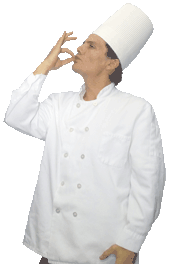At DelightedCooking, we're committed to delivering accurate, trustworthy information. Our expert-authored content is rigorously fact-checked and sourced from credible authorities. Discover how we uphold the highest standards in providing you with reliable knowledge.
What Are the Differences between a Regular and Restaurant Oven?
The primary difference between a restaurant oven and a residential one, is that commercial ovens are larger and more durable. They have to handle large quantities of food so that several items can be cooked simultaneously. The exact size and design of each restaurant oven may vary based on the type of restaurant and the exact needs of each individual kitchen.
One of the main differences between a restaurant stove and those used in most homes, is that they are more durable. They are often constructed of steel, and they are equipped to handle heavy use. While most residential ovens are used once or twice per day, those used in restaurants are often used continuously from the time the restaurant opens until they close. This requires a much more durable build, more convenient cleaning features, and better ventilated than what is required when cooking at home.

Another difference between a restaurant oven and residential models is that stoves used in commercial settings are typically much bigger in size. They are generally used to cook several meals at once for various customers. The exact size specifications will depend on the size of the restaurant business and the number of customers they expect to serve at once. There may be regulations in certain areas dictating the size an oven should be for commercial use.
Many restaurant oven models have additional features which are not found in most residential ovens. For instance, they should be able to heat very quickly to high temperatures for faster cook times and more thorough heat absorption. This allows cooks to prepare food safely and more quickly than one could do using a residential oven. They are also usually designed to be energy-efficient. Since restaurant ovens are usually operated for hours at a time, it is important that they consume as little electricity as possible to reduce restaurant owners' energy costs.
Other features which may be included in a restaurant oven include heat-resistant knobs, thermal-efficient materials which hold in heat, steam absorbers to hold in the crisp texture of fresh foods, and curved interior shape. The exact specifications will vary based on the type of foods being prepared. Many restaurants implement more than one oven for maximum efficiency and ideal cooking temperatures for various types of food.
AS FEATURED ON:
AS FEATURED ON:










Discussion Comments
Some kitchen ovens can get much hotter than home ovens, too, @AnswerMan. When I worked at a local steakhouse, one of my jobs was to clean, season and load baking potatoes into a pizza oven. I'd sometimes have 200 potatoes in that oven at the same time. It would have taken at least an hour and half to cook all of those potatoes in a home oven, but it only took 45 minutes in the commercial oven. I could raise the temperature to 600 degrees Fahrenheit very easily.
A lot of regular ovens for home use also try to make the most of the space available. They'll have roasting ovens, stove top burners, a broiling compartment and storage drawers. A commercial kitchen oven may only perform one task well, like baking. Other equipment takes care of things like pan searing or broiling or deep frying.
The ovens I used at work had a lot more racks in them than the one I used at home. Most home cooks use one or two racks and place them at different levels. The ovens in a typical restaurant have at least 10-15 separate racks, stacked on top of each other. If roasted chicken was on the menu, each one of those racks would be completely filled with seasoned chicken parts, and we'd have more chicken parts on trays waiting for the first set to come out. We used convection heating to make sure all of the racks cooked at the same rate.
Post your comments